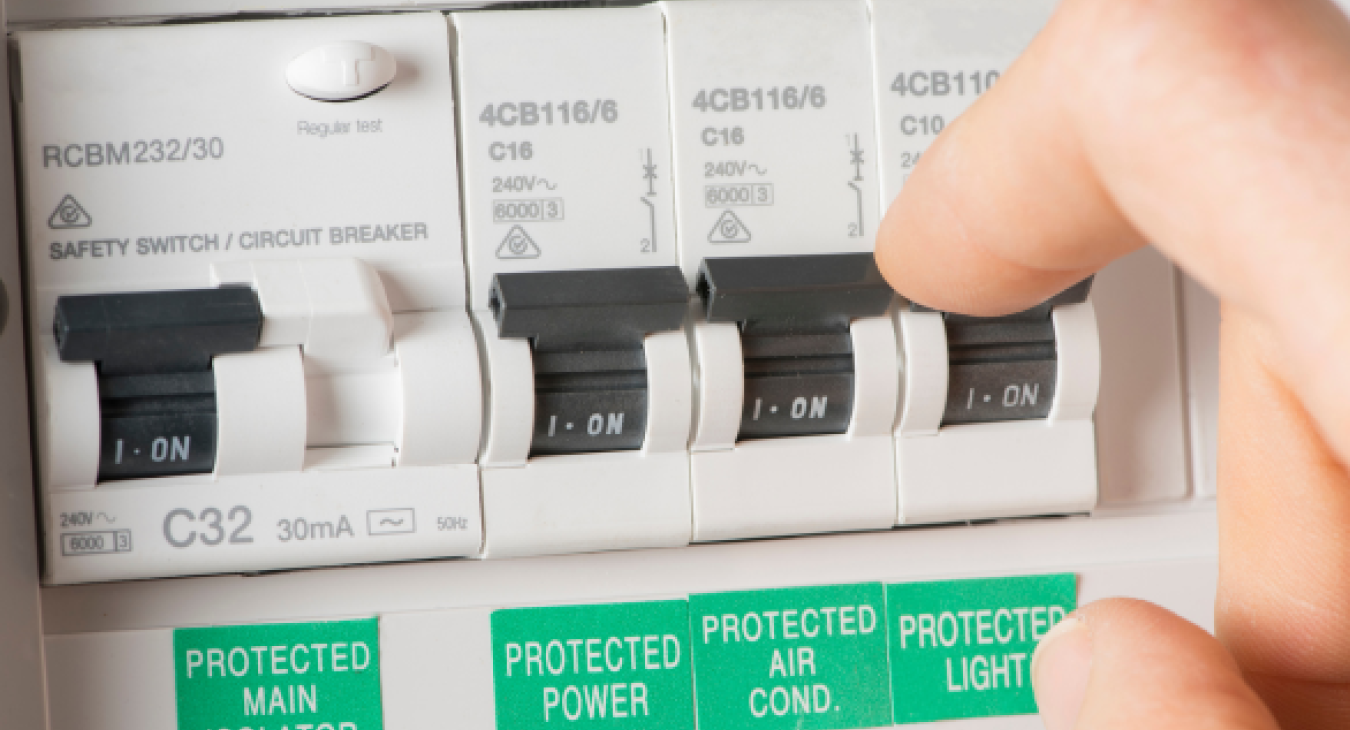August 2024
Back to top1) What is a trip switch?
A TRIP SWITCH is a device that is contained inside an electrical enclosure such as a consumer unit, fuse box, or electrical panel.
The trip switch can take various different forms and can perform a variety of tasks dependant upon type.
These safety switches are responsible for shutting off the power supply when an electrical fault develops in the wiring system. The fault could be faulty electrical appliances, a short circuit, an earth fault, damage to electrical wiring or other electrical issue.
Back to top2) Trip switches VS Circuit Breakers
A circuit breaker is a type of trip switch. There are many types of trip switch such as:
- GFCI (Ground Fault Circuit Interrupter)
- GFCI Breaker
- AFCI (Arc Fault Circuit Interrupted)
- MCB (Miniature Circuit Breaker)
- RCD (Residual Current Device)
- RCBO (Residual Current Breaker with Overload)
- AFDD (Arc Fault Detection Device)
2.1) GFCI
The GFCI detects any electrical current that leaks to earth. The device is very sensitive and will trip when there is electrical current missing in the realms of 4-6mA. That’s milli amps, a very tiny electrical current.
The device is intended to protect us from electric shocks.
2.2) GFCI Breaker
This is a GFCI device with an overload element attached so the device will trip when residual currents leak to earth, when there is electrical overload and when short circuits occur.
2.3) AFCI
This device protects against dangerous electrical arcing situations on the electrical circuit wiring and any connected appliances.
2.4) MCB
The miniature circuit breaker offer protection against Line (HOT) – Neutral Shorts and Line – Earth Faults of sufficient magnitude. Minor electrical earth faults will not cause an MCB to trip.
2.5) RCD
This device is similar to a GFCI but its typical operating current in domestic premises is 30mA, around 5 times more than a GFCI.
The device will offer protection against electric shocks. The RCD offers NO protection against short circuits or overload.
The RCD can fail if its rated current is exceeded.
2.6) RCBO
This device offers all the benefits of the RCD device, short circuit protection and overload protection.
2.7) AFDD
An AFDD is an RCBO with Arc Fault protection built in. This is the latest technology in 2024 in the UK for a modern fuse board or consumer unit installation.
Back to top3) Trip switch tripping and won’t reset?
If you have a trip switch that is tripping and will not reset, the first thing to do is to unplug all the appliances from each different circuit in the house or property. Make sure you locate each of the power points at the wall. A faulty appliance can cause switches to trip into their off position.
The most common culprits are the kitchen appliances. A tumble dryer is a regular problem for causing a switch to trip so make sure you unplug this appliance as well.
Take care when attempting to investigate faults on electrical circuits, electrical shock can occur easily without seeking the help of a qualified electrician.
If you have unplugged all the devices that are in your property and the trip switch will still not reset, then try this article for further help.
Back to top4) How often should trip switches be replaced?
Trip switches will normally last around 15-25 years in most cases. A lot depends upon how extensively used the electrical system is.
If there is a continuous and large flow of electricity due to high power demands in the electrical system then trip switches can wear out more quickly.
Back to top5) Can trip switches be mixed?
Generally speaking, no. Trip switches from one manufacturer should not be mixed with those from a different manufacturer unless permission can be sought to do so.
The manufacturer of the main consumer unit or electrical enclosure should be contacted in order to check that different equipment can be installed in their enclosure. Permission is rarely forthcoming unless they happen to manufacture several compatible brands.
Back to top6) Is there a trip switch for a power surge?
No. Most surge protection devices (SPD) currently on the market in 2024 do not shut off the electricity supply in the event of a power surge. They divert excess voltage to earth and in some way stabilise the incoming voltage by eliminating spikes in the supply.
There are various types available such as those that sit in extension power strips or that sit at the main consumer unit or electrical panel.
The SPD is often now installed at the main panel to protect the whole installation. This saves having an SPD on every appliance or extension lead/power strip.
Back to top7) Summary
A TRIP SWITCH is a necessary device for electrical installations and without them, we would rely solely on fuses or fuse wire to disconnect the electrical supply in the event of a fault.
There are various types of trip switch, each of which provides a different purpose. The most modern and up to date trip switches provide the best protection. Whilst installing a consumer unit onto an old system is not always suitable for older wiring, the advances in technology over fuse wire type fuse boxes are remarkable.
Trip switches are here to stay and are only getting better, providing extra safety for homes and business throughout the globe.
Read more articles
- Log in to post comments


